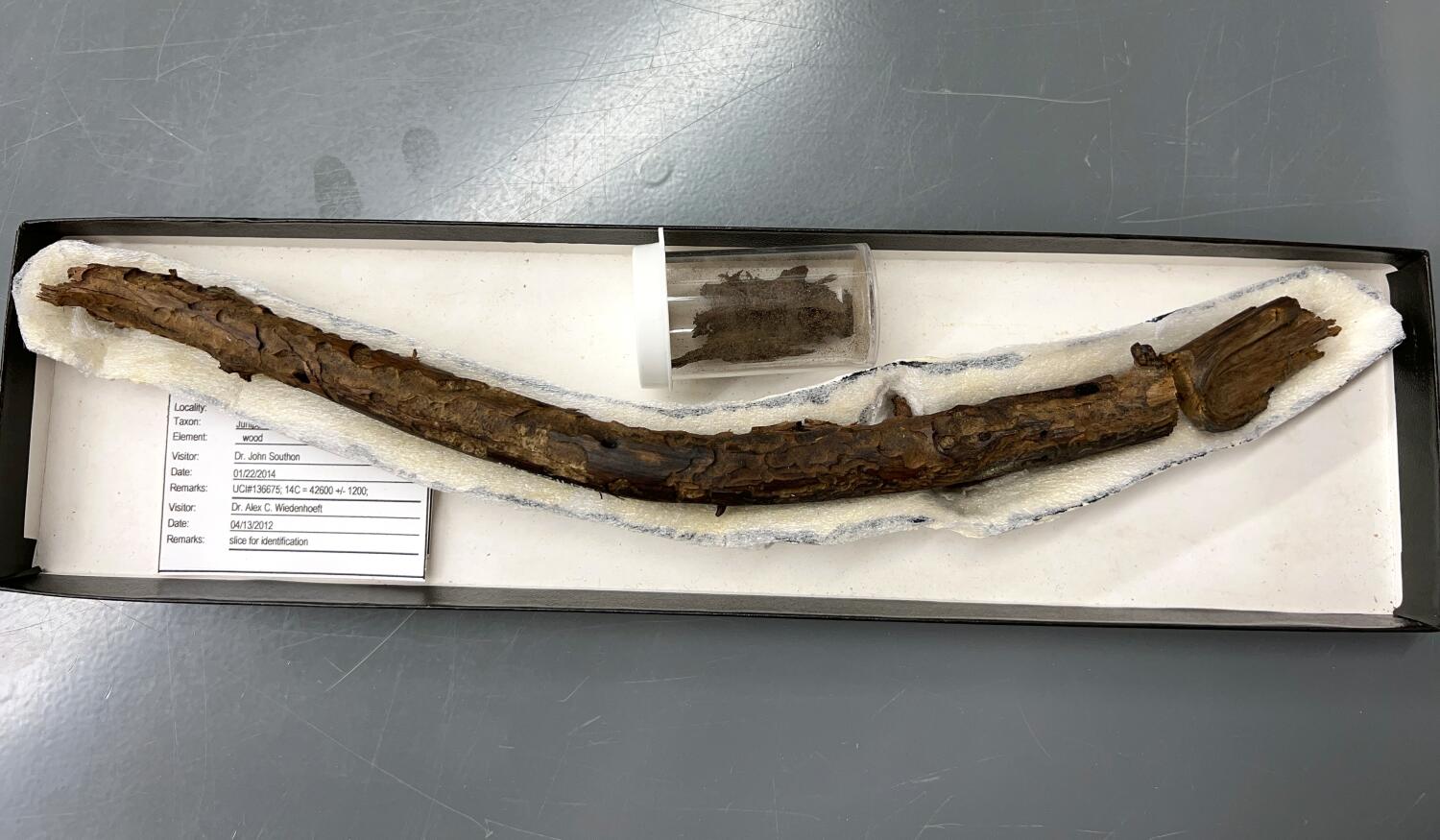On the La Brea Tar Pits and Museum, Jessie George and different paleobotanists — the parents who research historic vegetation the way in which paleontologists research prehistoric bones — are compiling an inventory of California native vegetation that survived the Ice Age and the area’s first large local weather change and are nonetheless alive in the present day.
The researchers consider we’ve a lot to be taught from these resilient vegetation that tailored after millennia of extreme temperature change, drought and wildfire that modified Southern California from moist and funky woodlands to the dry, shrubby chaparral panorama we see in the present day.
E-newsletter
Join our L.A. Occasions Vegetation e-newsletter
At first of every month, get a roundup of upcoming plant-related actions and occasions in Southern California, together with hyperlinks to suggestions and articles you will have missed.
You might sometimes obtain promotional content material from the Los Angeles Occasions.
Perhaps, they are saying, these hardy vegetation may also help our city landscapes climate our present local weather change.
Notice that not all these survivors can be blissful dwelling close to the Tar Pits in the present day, and people are marked with an asterisk (*). Most pines, for example, want wetter, cooler elements of the state, just like the Central Coast, George mentioned, and wouldn’t fare nicely in Southern California’s scorching, dry local weather.
In case you have a query about whether or not a local plant would work nicely in your space, speak to the consultants at locations just like the Tree of Life Nursery and Theodore Payne Basis, or seek the advice of the California Native Plant Society’s useful native plant database at Calscape.
For extra on these Ice Age survivors, learn our July 1 L.A. Occasions Vegetation e-newsletter.
Bushes/tall shrubs
- Monterey cypress (Hesperocyparis macrocarpa)
- Cypress (Hesperocyparis sp.)*
- California juniper (Juniperus californica)
- Rocky Mountain juniper (Juniperus scopulorum)*
- Bishop pine (Pinus muricata)*
- Monterey pine (Pinus radiata)*
- Pine (Pinus sp.)*
- Torrey pine (Pinus torreyana)*
- Blue elderberry (Sambucus mexicana)
- American dogwood (Cornus sericea)*
- Eastwood manzanita (Arctostaphylos cf. glandulosa)
- Huge berry manzanita (Arctostaphylos glauca)
- Coast stay oak (Quercus agrifolia)
- Scrub oak (Quercus dumosa)
- Southern California black walnut (Juglans californica)
- California sycamore (Platanus racemosa)
- Field elder (Acer negundo)
- Willow (Salix sp.)
Grasses/rushes
- Sedge (Carex sp.)
- Spikerush (Eleocharis sp.)
- Fimbry (Fimbristylis sp.)
- Barley (Hordeum sp.)
Shrubs/vines
- Huge saltbush (Atriplex lentiformis)
- Poison oak (Toxicodendron diversilobum)
- Baccharis (Baccharis sp.)
- Ceanothus (Ceanothus sp.)
- Chamise (Adenostoma fasciculatum)
- Toyon (Heteromeles arbutifolia)
- California blackberry (Rubus ursinus)
- Grape (Vitis sp.)
- Parish’s purple nightshade (Solanum parishii)
Perennial herbs
- Bur-reed (Sparganium eurycarpum)
- Water parsley (Oenanthe sarmentosa)*
- Ragweed (Ambrosia psilostachya)
- Deltoid balsam root (Balsamorhiza deltoidea)*
- Thistle (Cirsium sp.)
- Aster (Symphyotrichum sp.)
- Blue-eyed grass (Sisyrinchium bellum)
- Willow dock (Rumex salicifolius)
- White water buttercup (Ranunculus aquatilis)*
- Three-petaled bedstraw (Galium trifidum)*
Annual herbs
- Sunflower (Helianthus annuus)
- Frequent madia (Madia elegans)
- Clustered tarweed (Deinandra fasciculata)
- Cocklebur (Xanthium strumarium)
- False rosinweed (Osmadenia tenella)
- Fiddleneck (Amsinckia sp.)
- Phacelia (Phacelia sp.)
- Carolina geranium (Geranium carolinianum)
- Parry’s mallow (Eremalche parryi)
- Crimson maids (Calandrinia menziesii)
- Miner’s lettuce (Claytonia perfoliata)
- Water montia (Montia fontana)
- Little spring magnificence (Claytonia exigua)*
- California poppy (Eschscholzia californica)
- Purple owl’s clover (Castilleja exserta)
- Nuttall’s snapdragon (Antirrhinum nuttallianum)





